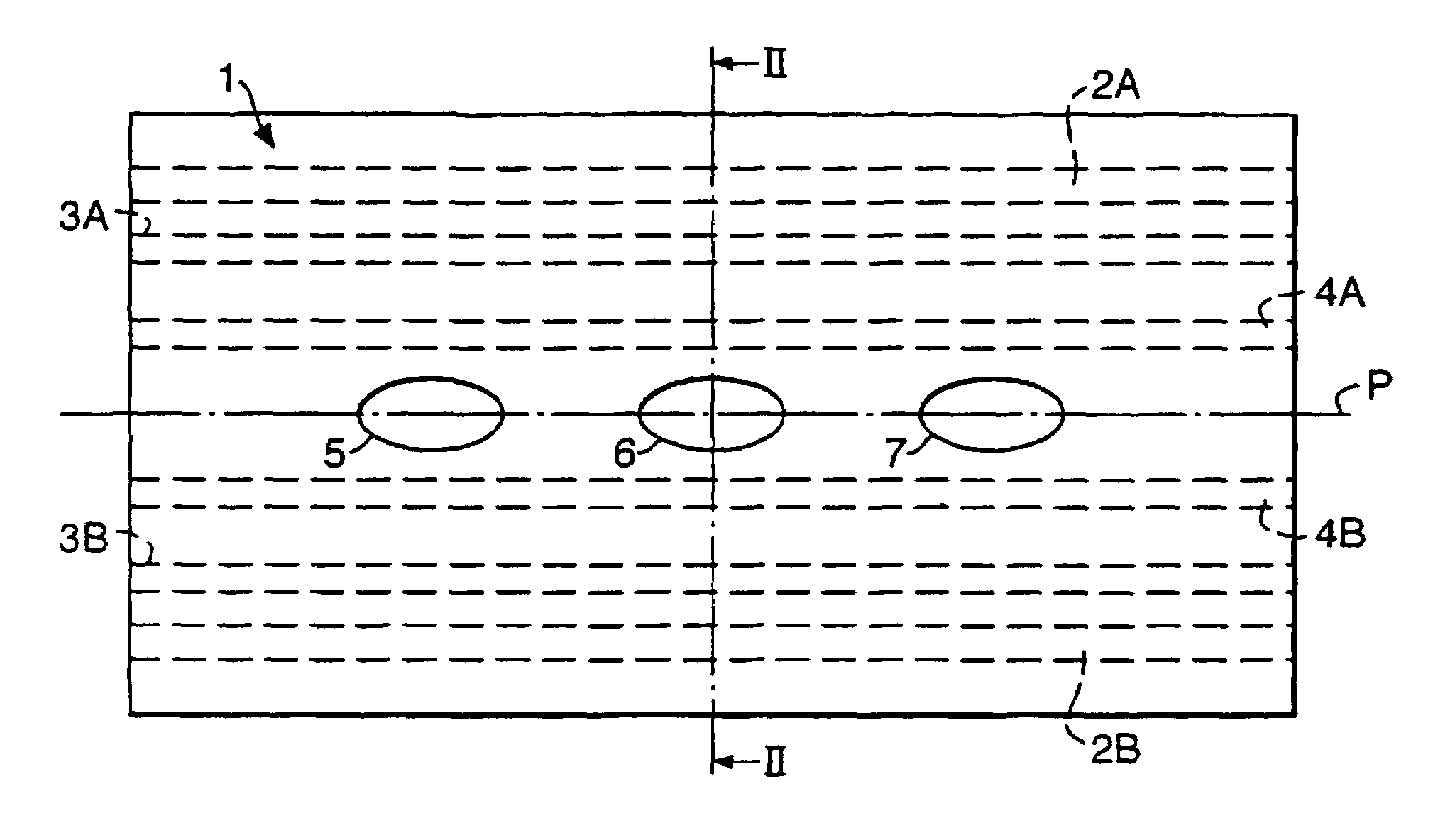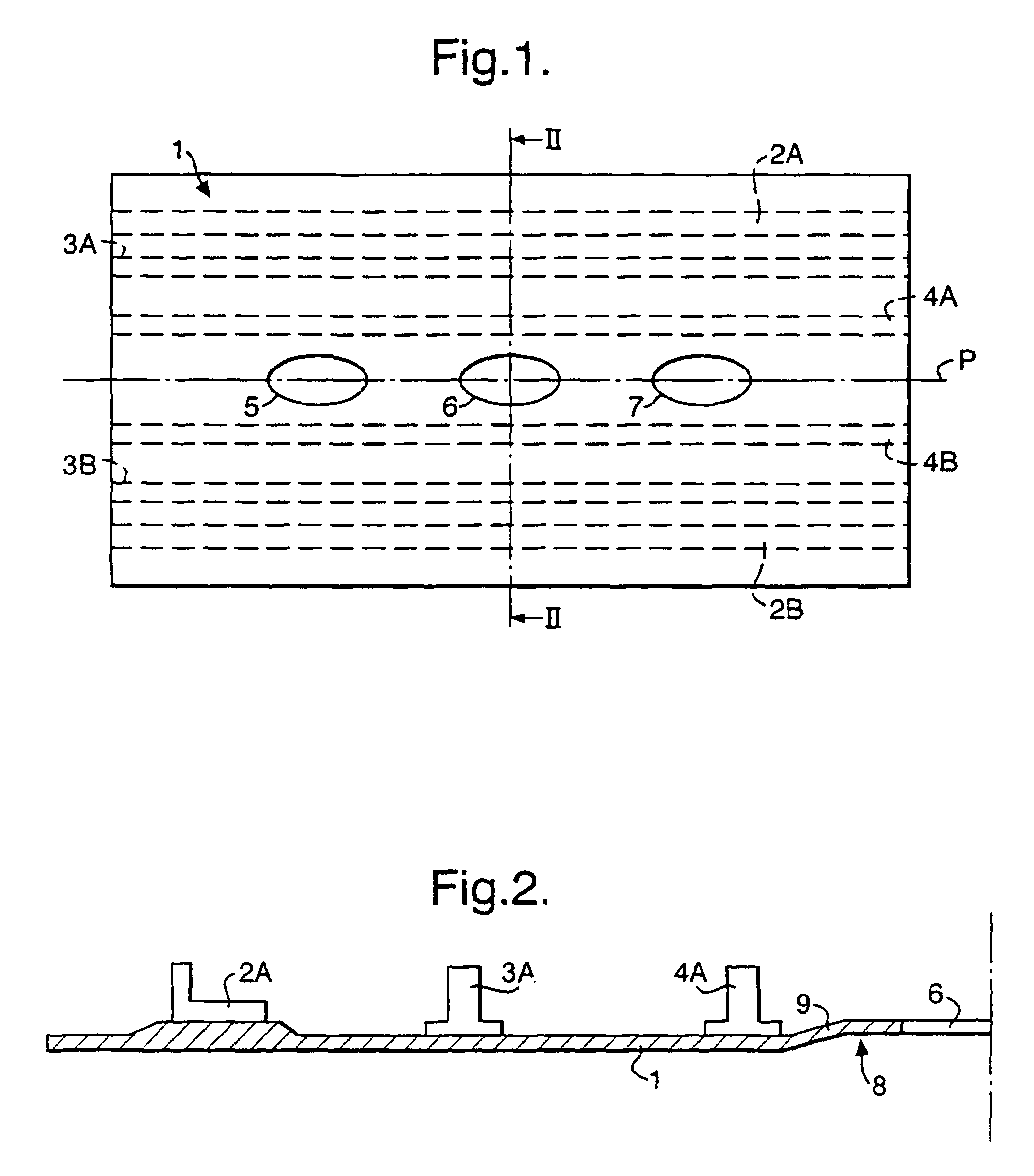Aircraft structural components
- Summary
- Abstract
- Description
- Claims
- Application Information
AI Technical Summary
Benefits of technology
Problems solved by technology
Method used
Image
Examples
Embodiment Construction
[0024]In the drawings the wing skin 1 is shown as flat, but it will be understood that in practice the wing skin will incorporate an aerodynamic curve, the radius of which would typically be of the order of 6 m.
[0025]The wing structure shown in FIGS. 1 and 2 is conventional and in this example, comprises a pair of spars 2A and 2B in the region of the leading and trailing edges of the wing and stringers 3A and 3B and 4A and 4B extending along the wing skin inside the spars 2A and 2B. No ribs are shown in FIGS. 1 and 2 but it should be understood that there may also be one or more ribs present. As will be understood, the wing structure of the example shown in FIGS. 1 and 2 is symmetrical about a longitudinal vertical plane marked P in FIG. 1. Suffix A is used to designate parts on one side of the plane P and suffix B to designate the corresponding part on the opposite side of the plane P.
[0026]Along the length of the wing structure shown in FIGS. 1 and 2 three manholes 5, 6 and 7, eac...
PUM
 Login to View More
Login to View More Abstract
Description
Claims
Application Information
 Login to View More
Login to View More - R&D
- Intellectual Property
- Life Sciences
- Materials
- Tech Scout
- Unparalleled Data Quality
- Higher Quality Content
- 60% Fewer Hallucinations
Browse by: Latest US Patents, China's latest patents, Technical Efficacy Thesaurus, Application Domain, Technology Topic, Popular Technical Reports.
© 2025 PatSnap. All rights reserved.Legal|Privacy policy|Modern Slavery Act Transparency Statement|Sitemap|About US| Contact US: help@patsnap.com


